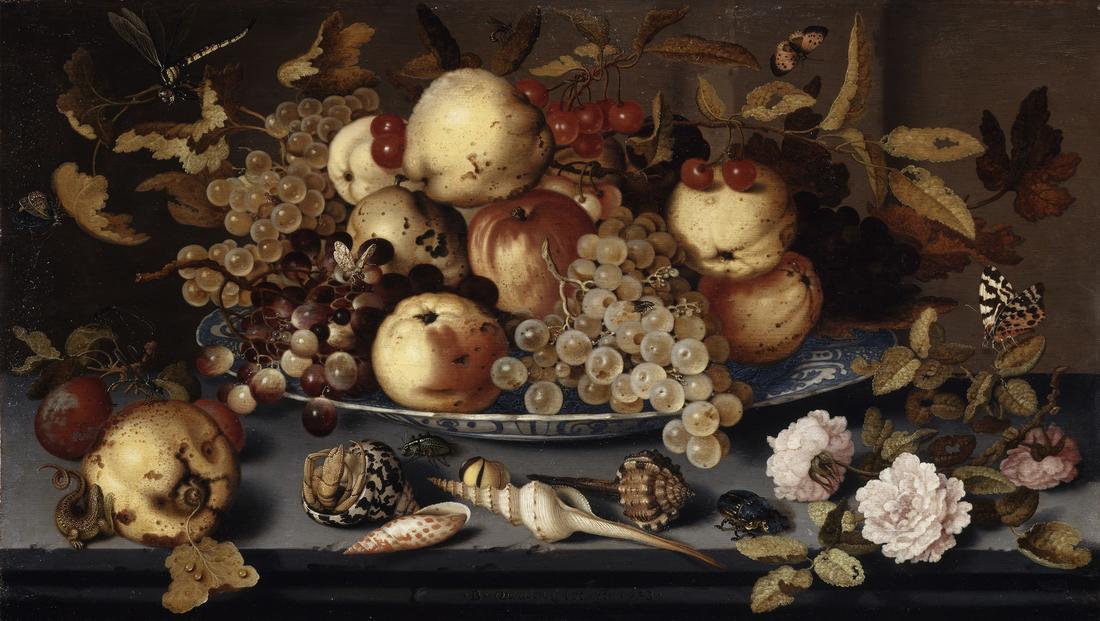The painter carefully selected the objects depicted. Imported fruit, rare flowers, precious shells and even Chinese porcelain reflected the era's taste for natural curiosities and exotic objects. The enthusiasts who collected them for their cabinet of curiosities also represented the main clientele for these refined paintings.
The painting's composition, though somewhat rigid, is balanced. The elements gathered in the foreground are juxtaposed with a basket of fruit. The oblique lines of the shells mark the depth, ensuring the transition between the two planes. The harmonious atmosphere is served by subtle colouring and soft lighting. The workmanship is precise and meticulous.
Still lifes of flowers, fruit and shells, developed in Middelburg in the early 17th century, are a speciality of Van der Ast. His works, with their strange, almost mineral appearance, often have a complex “vanitas” character.
The objects depicted have a symbolic value that gives the painting a more spiritual than decorative purpose. Behind this delicate accumulation lies a Christian meditation on human destiny...
Detail 1 : Leaves eaten by insects, rotting fruit, flowers about to fade: the brevity of existence is suggested by numerous allusions. While the lizard watching the dragonfly announces impending death, the shells, inert and empty, represent the mortal remains.
Detail 2 : Christian symbolism accompanies fruit and insects: grapes recall Christ's sacrifice, apples suggest original sin, and cherries symbolise paradise. While the scarab alludes to resurrection, the dragonfly, like the butterfly, represents the soul.
Inv. P 1937

The painter carefully selected the objects depicted. Imported fruit, rare flowers, precious shells and even Chinese porcelain reflected the era's taste for natural curiosities and exotic objects. The enthusiasts who collected them for their cabinet of curiosities also represented the main clientele for these refined paintings.
The painting's composition, though somewhat rigid, is balanced. The elements gathered in the foreground are juxtaposed with a basket of fruit. The oblique lines of the shells mark the depth, ensuring the transition between the two planes. The harmonious atmosphere is served by subtle colouring and soft lighting. The workmanship is precise and meticulous.
Still lifes of flowers, fruit and shells, developed in Middelburg in the early 17th century, are a speciality of Van der Ast. His works, with their strange, almost mineral appearance, often have a complex “vanitas” character.
The objects depicted have a symbolic value that gives the painting a more spiritual than decorative purpose. Behind this delicate accumulation lies a Christian meditation on human destiny...
Detail 1 : Leaves eaten by insects, rotting fruit, flowers about to fade: the brevity of existence is suggested by numerous allusions. While the lizard watching the dragonfly announces impending death, the shells, inert and empty, represent the mortal remains.
Detail 2 : Christian symbolism accompanies fruit and insects: grapes recall Christ's sacrifice, apples suggest original sin, and cherries symbolise paradise. While the scarab alludes to resurrection, the dragonfly, like the butterfly, represents the soul.
Inv. P 1937